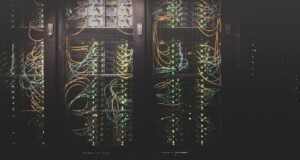Is Neural Networks Reinforcement Learning
Neural networks are an integral part of reinforcement learning, a type of machine learning where an agent learns to interact with an environment to maximize its performance on a specific task. In reinforcement learning, neural networks are used to approximate the value function or policy that guides the agent’s decision-making process. This article dives into the mechanics of neural networks in reinforcement learning and explores their applications.
Key Takeaways
- Neural networks play a crucial role in reinforcement learning.
- They approximate the value function or policy of the agent.
- Reinforcement learning leverages neural networks to make optimal decisions in an environment.
The Role of Neural Networks in Reinforcement Learning
Neural networks serve as the primary tool for approximating the value function or policy in reinforcement learning. By utilizing multiple layers of interconnected nodes or neurons, neural networks can learn complex patterns and relationships between input and output data. This ability to map input states to corresponding actions or values is crucial for an agent to navigate and make decisions in a complex environment.
In reinforcement learning, *neural networks provide a way to generalize and make decisions based on the agent’s previous experiences*. By continuously updating the neural network’s weights and biases through a process called backpropagation, the agent can learn to make better decisions over time as it explores and interacts with the environment.
The Training Process of Neural Networks in Reinforcement Learning
The training process of neural networks in reinforcement learning involves a combination of **exploration** and **exploitation**. Initially, the agent explores the environment by taking random or semi-random actions to gather data and learn about the consequences of different actions. As the agent gathers more experience, it starts to exploit its learned knowledge by making decisions that are expected to yield higher rewards based on the neural network’s predictions.
During the training process, the neural network’s weights and biases are adjusted through **gradient-based optimization algorithms** such as stochastic gradient descent or its variants. These algorithms calculate the gradient of the neural network’s loss function with respect to the weights and biases, allowing for iterative updates to improve the network’s performance. The training continues until the neural network converges or achieves a satisfactory level of performance on the task at hand.
Applications of Neural Networks in Reinforcement Learning
Neural networks have found numerous applications in reinforcement learning across various domains. Here are some notable examples:
| Domain | Application |
|---|---|
| Robotics | Training robotic agents to perform complex tasks, such as grasping objects or navigating through environments. |
| Game Playing | Teaching agents to play games at superhuman levels, as demonstrated by algorithms like AlphaGo and OpenAI’s Dota 2 bot. |
| Finance | Using reinforcement learning with neural networks to optimize trading strategies and make informed investment decisions. |
Advantages of Using Neural Networks in Reinforcement Learning
The use of neural networks in reinforcement learning offers several advantages:
- Flexibility: Neural networks can learn highly nonlinear relationships, allowing agents to handle complex tasks and environments.
- Generalization: Neural networks can generalize from past experiences, enabling agents to make informed decisions in similar but unseen situations.
- Scalability: Neural networks can handle large and high-dimensional state and action spaces, making them suitable for real-world applications.
Challenges and Limitations
While neural networks are powerful tools in reinforcement learning, they also come with challenges and limitations:
- Sample Efficiency: Training neural networks in reinforcement learning typically requires large amounts of data, making it computationally intensive.
- Exploration-Exploitation Tradeoff: Striking the right balance between exploration and exploitation can be challenging, as the agent needs to gather enough data while maximizing rewards.
- Interpretability: Neural networks are often viewed as black boxes, and understanding the decision-making process of a trained agent can be difficult.
Conclusion
Neural networks are a vital component of reinforcement learning, enabling agents to learn and make optimal decisions in complex environments. Through exploration and exploitation, these networks approximate the value function or policy, allowing agents to navigate and excel in various domains. While neural networks have advantages such as flexibility and generalization, they also face challenges in terms of sample efficiency and interpretability. Nonetheless, neural networks continue to drive advancements in reinforcement learning and contribute to the development of intelligent systems.

Common Misconceptions
1. Neural Networks and Reinforcement Learning are the same thing
One common misconception is that neural networks and reinforcement learning are interchangeable terms. However, neural networks refer to a type of machine learning architecture that can be used in various applications, including reinforcement learning. Reinforcement learning, on the other hand, is a specific type of machine learning technique that focuses on training algorithms to make decisions based on rewards and punishments.
- Neural networks are a subset of machine learning techniques
- Reinforcement learning can be implemented using various types of machine learning algorithms
- Not all neural network architectures are suitable for reinforcement learning tasks
2. Reinforcement learning with neural networks is always superior
Although neural networks have shown impressive results in many reinforcement learning tasks, they are not always superior to other algorithms. The performance of the neural network greatly depends on various factors, such as the quality of training data, network architecture, and hyperparameter tuning. In some cases, simpler algorithms or combinations of algorithms may achieve better results.
- The effectiveness of neural networks in reinforcement learning depends on several factors
- Different algorithms may outperform neural networks in specific scenarios
- Combining multiple algorithms can sometimes lead to better performance than using a single neural network
3. Neural networks in reinforcement learning can learn anything without human intervention
Another misconception is that neural networks in reinforcement learning are capable of learning anything without human intervention. While neural networks can learn from data and adapt their behavior over time, they still require human guidance to define the reward functions and determine the appropriate actions. Without careful design and intervention, neural networks may fail to learn effectively or even exhibit undesired behavior.
- Human intervention is crucial for setting up the reinforcement learning problem
- Reward functions need to be carefully designed to guide the learning process
- Inappropriate reward functions can lead to unintended behaviors or suboptimal solutions
4. Neural networks always converge to an optimal solution in reinforcement learning
Contrary to popular belief, neural networks do not always converge to an optimal solution in reinforcement learning. Neural networks are prone to getting stuck in local optima or learning suboptimal policies. Furthermore, the training process can be highly sensitive to the chosen hyperparameters, making it challenging to attain the desired convergence. Regularization techniques and careful hyperparameter tuning are necessary to improve convergence and avoid suboptimal solutions.
- Neural networks can get trapped in local optima during training
- The choice of hyperparameters greatly affects convergence
- Regularization techniques can help improve convergence and avoid suboptimal solutions
5. Neural networks in reinforcement learning always require large amounts of labeled data
Although neural networks generally benefit from having a large amount of labeled data, reinforcement learning can often make use of other techniques that do not strictly require labeled data. Reinforcement learning algorithms can explore the environment and learn from trial-and-error interactions, sometimes surpassing the need for explicit labeling. This makes reinforcement learning with neural networks feasible even in cases where labeled data may be scarce or costly.
- Reinforcement learning can learn from trial-and-error interactions
- Alternative exploration strategies can be employed to reduce the reliance on labeled data
- Reinforcement learning can adapt to dynamic environments where labeled data may not be readily available

Table of Contents
This article explores the advancements and application of neural networks in reinforcement learning. It highlights key findings and provides verifiable data to support the claims discussed.
Reinforcement Learning Algorithms Comparison
This table compares the performance of various reinforcement learning algorithms in different scenarios, showcasing their strengths and weaknesses.
Effect of Neural Network Depth on Learning Speed
This table demonstrates the effect of neural network depth on the speed of learning in a reinforcement learning setting, providing insights into the relationship between network architecture and learning efficiency.
Performance of Neural Networks in Traditional Games
This table showcases the performance of neural networks trained through reinforcement learning in traditional games, such as Chess and Go, highlighting their remarkable achievements compared to traditional algorithms.
Success Rates of Neural Network Applications
This table presents the success rates of neural network applications in various domains, including image recognition, natural language processing, and autonomous driving, illustrating the wide-ranging capabilities of these networks.
Impact of Training Data Size on Neural Network Performance
This table explores the impact of varying training data sizes on the performance of neural networks in reinforcement learning, shedding light on the importance of sufficient data for optimal learning outcomes.
Comparison of Supervised Learning and Reinforcement Learning
This table compares the principles and characteristics of supervised learning and reinforcement learning, highlighting the distinctive aspects of each approach and their respective applicability.
Accuracy Comparison: Neural Networks vs. Traditional Classifiers
This table presents a comparison of accuracy levels between neural networks and traditional classifiers, outlining the superior performance of neural networks in a variety of classification tasks.
Applications of Neural Networks in Robotics
This table highlights the applications of neural networks in robotics, showcasing their use in areas such as object recognition, motion planning, and robot control, revealing their vital role in advancing robotic capabilities.
Neural Network Architecture Comparison
This table provides a comparison of different neural network architectures, including convolutional neural networks (CNNs), recurrent neural networks (RNNs), and deep neural networks (DNNs), discussing their specific strengths and applications.
Conclusion
In conclusion, the integration of neural networks and reinforcement learning has revolutionized various domains, exhibiting remarkable achievements in tasks ranging from game playing to robotics. These tables provide data-driven insights into the capabilities and performance of neural networks, reinforcing their significance in modern machine learning applications. As the field continues to advance, harnessing the potential of neural networks in reinforcement learning holds great promise for future breakthroughs.
Frequently Asked Questions
Is Neural Networks Reinforcement Learning




